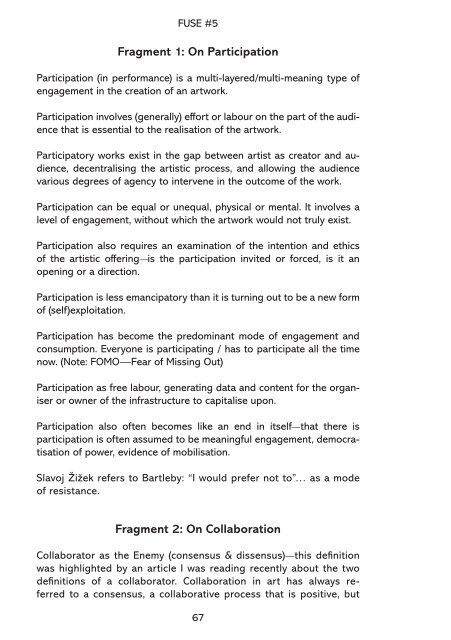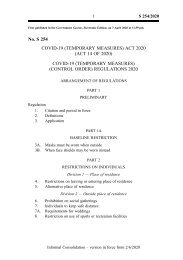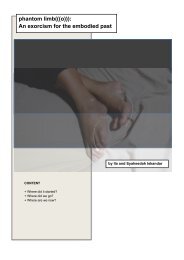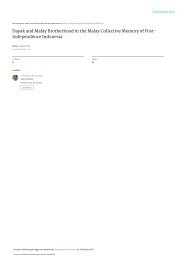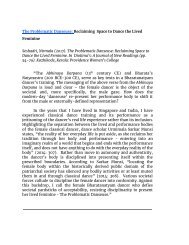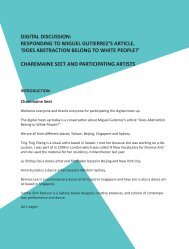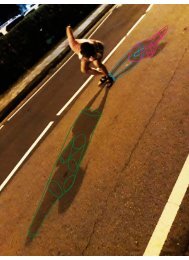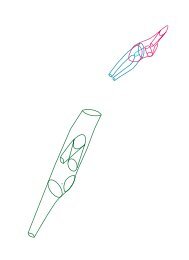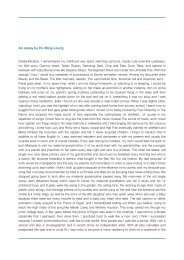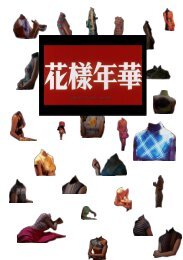FUSE#5
This edition of FUSE consists of articles contributed by artists who participated in Dance Nucleus' programmes in 2020.
This edition of FUSE consists of articles contributed by artists who participated in Dance Nucleus' programmes in 2020.
You also want an ePaper? Increase the reach of your titles
YUMPU automatically turns print PDFs into web optimized ePapers that Google loves.
Choreography Theory—Seven Fragments<br />
‘collaborator’ in political discourse can also mean an individual that<br />
is colluding with the enemy—“he is a collaborator, a traitor”. I found<br />
this duplicity very fascinating.<br />
Successful collaboration involves negotiation, conflict, and also<br />
a letting go of the ego, or the idea of the artist as the “solo genius”.<br />
Collaboration requires those that are involved to contribute their interests<br />
and skills to the artwork that they are creating (hopefully with the<br />
goal of creating something beyond what each of your individual efforts<br />
could have achieved).<br />
Collaboration should not be about finding the “lowest common<br />
denominator”. However, collaboration is very much dependent on the<br />
level of trust, relationship, belief, and ability of the artists to meet<br />
differences of opinion with an open mind.<br />
Collaboration is not always equal collaboration— people can<br />
collaborate within specific roles or frameworks in the service of an<br />
artwork, or it can be more of a 50/50 split, where there is much more<br />
openness about who has the agency in creative decisions.<br />
Fragment 3: On Participatory Performance, Online Events<br />
and Post-Covid Art 1<br />
What then, when the majority of work is now online, and the distance<br />
grows even greater? What does participation look like now? Shannon<br />
Jackson points to some of these ideas in her keynote Essential Service<br />
and the Proximity of Labour (2020). In one way, the reliance on the<br />
network plays into the hands of both neoliberal technocrats (we participate<br />
endlessly in a series of digital pastiches, and exploit both our<br />
own efforts and those of the artists who are usually doing this for<br />
free) and relational aesthetics, where we are in a state of re-producing<br />
sociality and re-negotiating the relationship of the elements through<br />
Zoom-performances where everyone is “present” and “participating”<br />
(because they are visible—a backdrop to the performance). And yet,<br />
we are sitting behind a literal 4th wall of the computer screen. We are<br />
lacking the desire to question, experiment, and engage as a means of<br />
experiencing performance (Ranciere, 2008) because we are experiencing<br />
Jackson’s spatial emptiness. In this instance, the distance between<br />
the spectator and the artwork almost feels too great. We both lack<br />
boundaries as an audience and have the most “hard-to-breach”<br />
boundary of all. In an “experience economy” (Kunst, 2015) how do<br />
we make this digital “experience” count for anything more meaningful<br />
than scrolling through Instagram. How can we harness what Jackson<br />
calls the “energetic power” of distance to bring the audience back<br />
68


